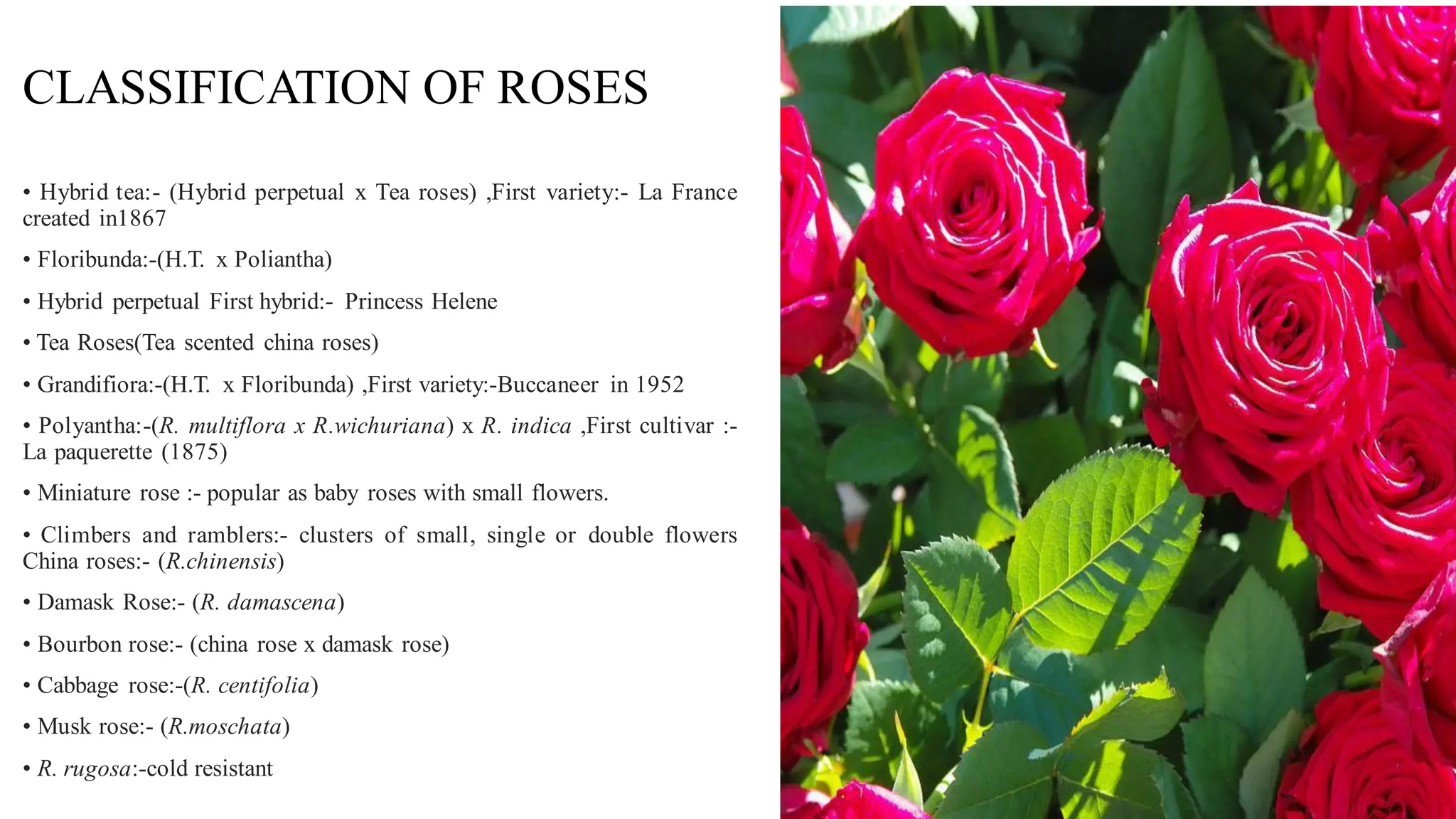This document provides information on rose production technology. It discusses the classification of roses, their importance and uses, propagation methods including cutting, layering and budding, climate requirements, soil requirements, planting methods, aftercare including manuring, use of plant growth regulators, irrigation, weeding, mulching and pruning. The key aspects covered are the different types of roses, their propagation through cuttings and budding, climate and soil needs for rose cultivation, and maintenance practices like manuring, irrigation, weeding and pruning.



























